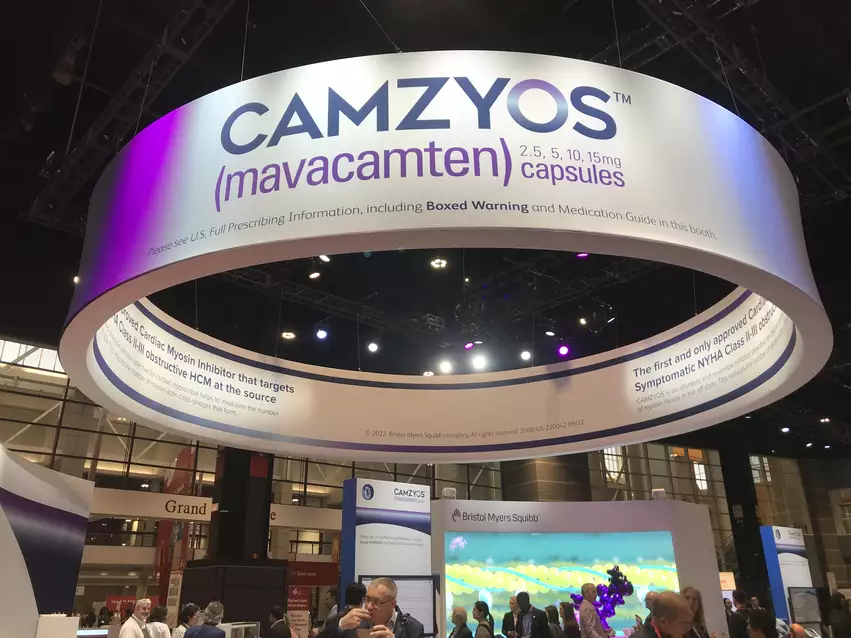More consistency, standardization still needed when treating HCM
With the first drug to noninvasively manage patients with hypertrophic cardiomyopathy (HCM) entering the U.S. market last year, there has been an explosion of interest by hospitals and HCM sessions added to recent cardiology meetings. However, what has become clear is the lack of standardization in how these patients are evaluated and managed. Testing, imaging techniques and what information is reported varies from hospital to hospital. This often requires tests to be redone when a patient to referred too a high-volume HCMA Centers of Excellence. The invasive procedures to treat HCM using surgical myectomy or catheter-based alcohol septal ablation also can vary between centers.
To address this, the American Society of Echocardiography (ASE) at its 2023 annual meeting in June hosted a one-day HCM forum. The event gathered some of the top HCM experts from various subspecialties to discuss these issues. Ideas gathered at this meeting are being used to create a larger HCM meeting in 2024 to being the process of setting standard protocols.
One of these experts was Anjali Owens, MD, medical director with the Center for Inherited Cardiac Disease and associate professor of medicine at the Hospital of the University of Pennsylvania. She spoke with Cardiovascular Business about the need for better standardization and explained how HCM care is evolving.
HCM has been considered a rare disease, and Owens said many smaller cardiology practices might only have a one or two patients with HCM. For this reason, there has been a sort of one-size-fits-all approach to HCM. But research and longer term tracking of patients has shown HCM can come in a variety of forms that impact patients differently.
"In HCM there is no one-size-fits-all. I think we are entering an era of where we can now personalize the diagnosis, management and treatment strategies for patients with HCM. What that means is we need to start by standardizing the techniques we use, such as imaging, so we are all performing the same tests, getting the same degree of detail, understanding their pathophysiology, functional status and their symptomatology. That was we can understand what phase of the disease they are in," she explained.
But to better understand a patient's HCM, standardization in imaging, reporting and even the taxonomy used in reports is needed so clinicians from different centers are all on the same page. Often, HCM patients are referred to the 50 or so HCM Centers of Excellence across the country which specialize in HCM care. Because patient volumes are low, these centers try to concentrate HCM patents in their area at one location to enable imagers, surgeons and interventionalists to become experts by seeing larger numbers of these patients. At Centers of Excellence, a heart team approach is used to review each patient and how to best manage them.
"There are big differences we see in terms of the details in imaging, the level of functional testing, how many patients get an MRI, and what the quality of the MRI images and the reads are. What we are aiming to do is develop a minimum standard for assessments of patients with HCM so they are getting properly diagnosed and managed," Owens explained.
She said HCM patients have come in with echos and reports that include widely variable levels of information. Owens is a heart failure specialist, not an imager, so she said being able to sit at a table with echocardiographers, advanced cardiac imagers, surgeons and interventionists was a helpful way to hear the issues from these different prospectives.
"I think it is good to develop standardization or accreditation for all centers to be able to use a minimal standardized protocol for HCM to collect information on the anatomy, physiology and left ventricular outflow tract (LVOT) gradients," she said.
New treatments and drugs to treat HCM
Owens said in addition to the new drug mavacamten and the standard treatments for severe HCM with myectomy and septal ablations, there are new agents and interventional techniques in development. "At the end of the day, we would like to see more options for our patients," Owens said. She said more options will enable better personalized treatment for each patient.
One way to make myectomy less invasive than open heart surgery is a technique called transcatheter myotomy, which was being tested in pigs in 2022. Called septal scoring along the midline endocardium (SESAME), an interventional cardiologist can lacerate the myocardium using transcatheter electrosurgery to eliminate LVOT obstruction.
Watch a video about SESAME with one of its creators Adam Greenbaum, MD.
She explained that there are also new drugs in trials effecting energetics and there are drugs in pre-clinical development that impact lucitropy (the rate of myocardial relaxation) that will not have as much impact on systemic function. There are also novel gene replacement therapies that will be studied in the next year or two in first-in-human clinical trials.
HCM is a chronic disease that impacts patients over their lifetime. For this reason, she said registries are needed to track patients over the long-term to see how various therapies impact their lives beyond the usual trial follow-up period. This can be done by engaging patients and HCM patient advocacy groups to gather the necessary patient numbers.
"This can also inform patient reported outcomes, which is something that we desperately need in HCM to understand patients' response to therapies and their overall burden of disease," she added.

